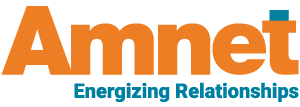Printed textbooks are no longer the only option in classrooms. As more schools shift to digital learning and inclusive education in 2025, there’s a clear need for content that works across devices and supports different types of learners.
EPUB 3 is one format helping make that possible. It can adjust to screen size, include media, and meet accessibility guidelines. For students who rely on assistive tools, this makes a great difference.
What Makes EPUB 3 Different?
EPUB 3 works differently from older formats like PDF, as it’s more flexible and easier to update. It easily adapts to devices and can include media like audio or video in the content. It’s also built to support accessibility, helping students who use assistive tools to move through EPUB content easily. This matters in digital classrooms, where content needs to work for every learner, no matter the device or ability.
The demand for accessible digital content in education is growing. Technavio estimates the educational publishing market will expand by USD 26.19 billion between 2023 and 2028, with a CAGR of 22.9 percent. A major driver of this growth is the shift toward multimedia-rich, born-accessible EPUB 3 formats.
Accessibility and Compliance with WCAG and Section 508
EPUB 3 supports compliance with WCAG 2.2 and Section 508. It includes features like alt-text, semantic tags, keyboard navigation, and language markup, which are essential for users who rely on assistive technology.
The 2024 Global Accessibility Insight Report shows that more than 60 percent of education publishers now use EPUB workflows to improve accessibility. A separate audit of 20,000 scholarly PDFs found that only 3.2 percent met full accessibility standards, while nearly 75 percent failed to meet basic criteria. Amnet’s digital accessibility services ensure EPUB 3 content is fully WCAG compliant. Alt-text creation, media overlays, and thorough accessibility audits make Amnet’s educational resources inclusive and legally sound.
EPUB 3 for Personalized and Adaptive Learning
Classrooms are shifting toward learning models that adapt to individual needs. EPUB 3 makes this possible by offering flexible learning experiences. Its format allows students to change text size, adjust contrast, or use read-aloud features when needed. For learners with dyslexia, vision difficulties, or attention-related challenges, these tools can ease learning and improve focus.
Tools and Workflows Supporting EPUB 3
The success of EPUB 3 depends not just on the format itself but on the production process as well. Publishers turn to XML-first workflows because they support long-term flexibility. Content prepared this way can move easily between online platforms, print editions, or digital readers.
Amnet leverages this ecosystem with AI-powered tools for automated quality checks, alt-text generation, and multimedia accessibility validation. Our emphasis on interoperability, compliance, and inclusive delivery ensures our EPUB 3 outputs are production ready and accessible at scale.
More schools, districts, and content providers are turning to EPUB 3. Its adaptability, multimedia features, and accessibility support match the requirements of today’s diverse classrooms.
With teams experienced in XML workflows, accessible design, and instructional content, Amnet supports every step of unlocking EPUB 3 capabilities. Whether building new content or improving existing files, Amnet ensures each project meets accessibility standards and works across devices. The result is content that supports every learner and stands up to the changing demands of education. Connect with us today.
Source



